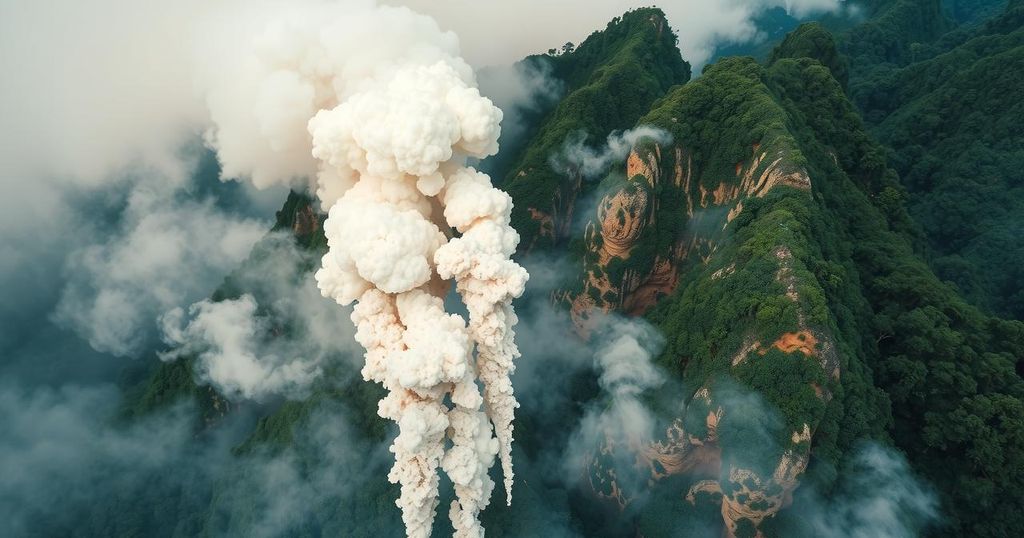Severe Fires and Air Quality Concerns in Brazil and Bolivia: Insights from NASA Imaging

On August 28, 2024, NASA inspected severe fire outbreaks in Brazil and Bolivia using satellite imaging. High temperatures, low humidity, and drought conditions are fueling these blazes. The imagery also indicates hazardous levels of atmospheric aerosols, underscoring public health risks. An interactive map offers real-time insights into the situation, drawing attention to urgent monitoring needs.
On August 28, 2024, the Visible Infrared Imaging Radiometer Suite (VIIRS), mounted on the joint NASA/NOAA NOAA-20 satellite, captured significant thermal activity in Brazil and Bolivia characterized by intense fires. These fires, indicated by red dots on the accompanying imagery, are exacerbated by high temperatures, low humidity, and prolonged drought conditions affecting the region. The imagery illustrates both the fires and thermal anomalies, alongside an analysis of atmospheric conditions impacting air quality.
The left image depicts a true-color reflectance overlay, wherein red dots signify detected fires and thermal anomalies. Meanwhile, the right image incorporates the Aerosol Index layer, measuring the presence of ultraviolet-absorbing particles, or aerosols, in the atmosphere. Elevated Aerosol Index values, particularly those approaching five (highlighted in dark red), suggest significant concentrations of particles that may impair visibility and pose health risks. Such conditions can arise from dust storms or smoke associated with biomass burning.
An interactive map is available via NASA Worldview, allowing users to explore real-time fire data and historical imagery. The Fire Information for Resource Management System (FIRMS) Global Fire Map also provides detailed insights regarding current fire statuses in the affected areas. This situation underlines the critical need for monitoring environmental changes and their implications for public health and safety.
The persistent occurrence of fires in regions like Brazil and Bolivia is driven by several factors, including climatic conditions and human activities. High temperatures and low humidity create an environment conducive to fires, while extended periods of drought significantly heighten the risk of wildfires breaking out. The application of advanced satellite technologies, such as VIIRS, enables timely detection and monitoring of these thermal anomalies and their associated health impacts. Understanding the movement and concentrations of aerosols is crucial to evaluating air quality and public health.
In conclusion, the satellite observations on August 28, 2024, reveal alarming incidences of fires in Brazil and Bolivia, with significant implications for air quality and human health. The integration of advanced satellite imagery, including the Aerosol Index layer, enhances our understanding of the environmental conditions that exacerbate these fires. Continuous monitoring and analysis are essential for addressing the challenges associated with such natural disasters and mitigating their adverse effects on health and the environment.
Original Source: www.earthdata.nasa.gov






